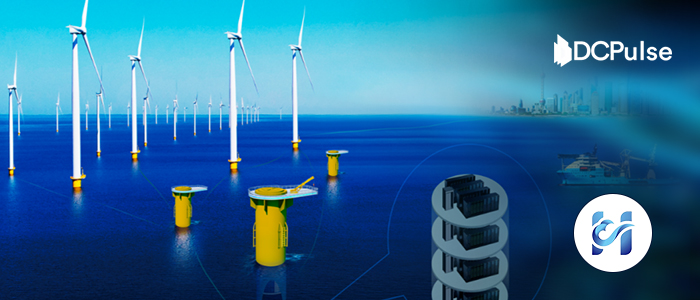Shanghai, China, October 22, 2025- HiCloud Technology Co., Ltd. has announced what it calls the world’s first commercial-scale wind-powered underwater data center, marking a new chapter in China’s push to blend renewable energy with digital infrastructure. The pilot facility, anchored off the coast of Shanghai’s Lingang Special Area, connects directly to an offshore wind farm, an engineering feat designed to power the servers beneath the waves almost entirely through clean energy.
The project’s first phase carries about 2.3 megawatts of capacity, with expansion plans already in motion to reach around 24 megawatts. But HiCloud’s ambitions stretch far beyond that, the company has set its sights on a staggering 500-megawatt subsea deployment, envisioning a new model of low-carbon, high-density computing powered by the sea and the wind.
HiCloud said the USD 220 million venture represents a strategic blend of offshore wind generation and modular underwater data modules, each cooled by natural seawater. The approach dramatically reduces energy used for cooling, which in traditional land-based data centers can account for up to half of total consumption, and targets a power usage effectiveness (PUE) below 1.15, a benchmark rarely achieved in hyperscale facilities.
The underwater design not only boosts efficiency but also saves valuable land resources in coastal cities like Shanghai. Each module sits within pressure-resistant steel housing, maintaining optimal temperatures through circulating seawater and specialized heat exchangers. When combined with steady wind power, the system offers a near-continuous clean energy supply.
China’s state media described the project as a milestone in the country’s “marine digital economy” strategy, where renewable power generation, advanced computing, and coastal development intersect. Analysts note it also reflects Beijing’s broader plan to scale national computing power by 50 percent before 2030, while keeping energy intensity in check.
Though still early in deployment, HiCloud’s subsea model could set a precedent for how nations approach high-density computing in the age of AI. With hyperscale players facing pressure to decarbonize their infrastructure, projects like this could redefine the limits, and the depths of sustainable cloud computing.



.jpg)
.jpg)